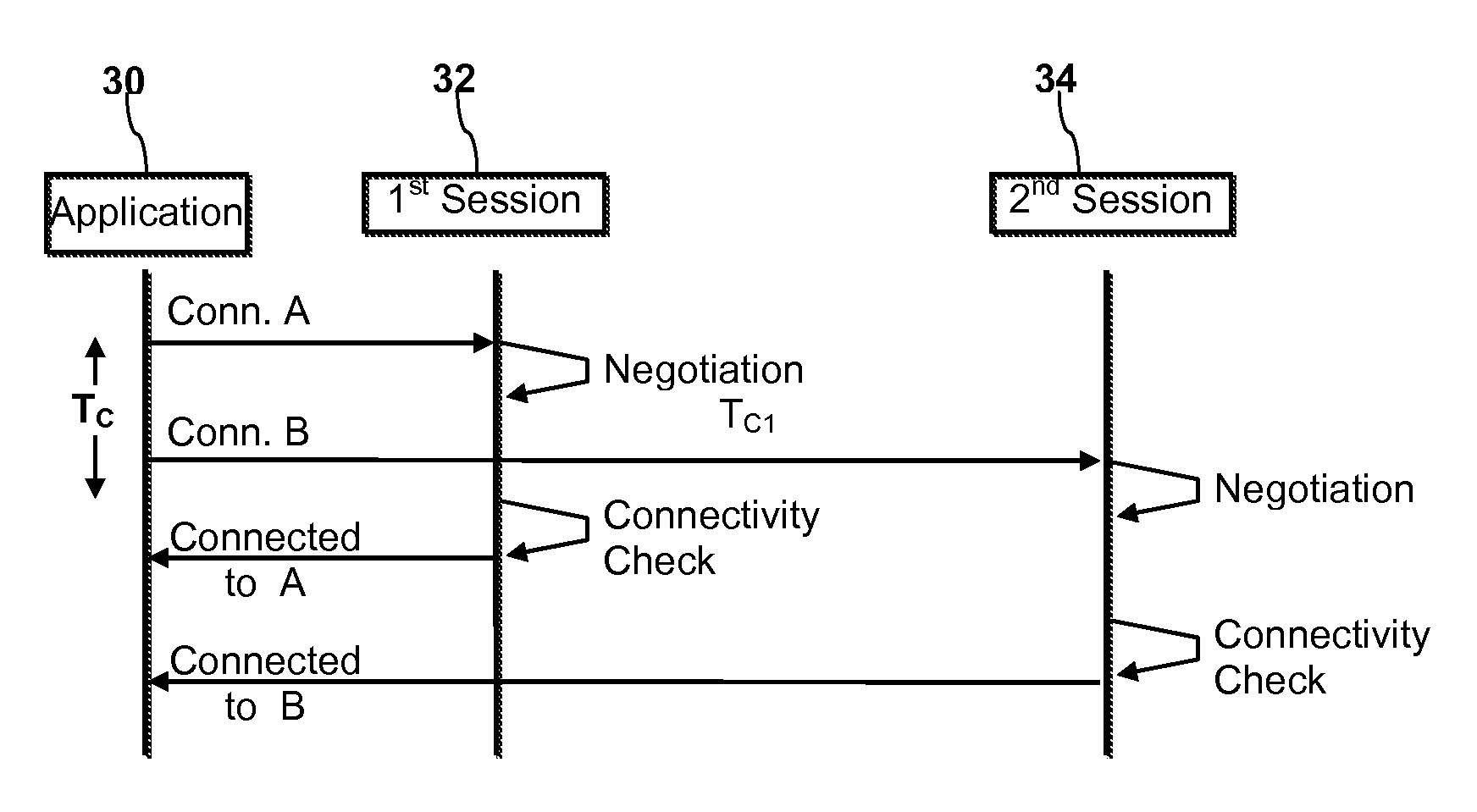Traversal of symmetric network address translator for multiple simultaneous connections
- Summary
- Abstract
- Description
- Claims
- Application Information
AI Technical Summary
Benefits of technology
Problems solved by technology
Method used
Image
Examples
Embodiment Construction
[0015]Although the following detailed description contains many specific details for the purposes of illustration, anyone of ordinary skill in the art will appreciate that many variations and alterations to the following details are within the scope of the invention. Accordingly, examples of embodiments of the invention described below are set forth without any loss of generality to, and without imposing limitations upon, the claimed invention.
II. Summary
[0016]Port prediction technique is used to traverse symmetric NAT (Network Address Translator). If a node behind a symmetric NAT is trying to connect many remote nodes at a time, prediction could fail with a higher probability. Embodiments of the invention avoid the connection failure caused by the case of simultaneous port prediction by putting new requests on hold until a previous request has reached a connectivity check stage. This allows a node multiple simultaneous connections through a symmetric NAT without causing problems wi...
PUM
 Login to View More
Login to View More Abstract
Description
Claims
Application Information
 Login to View More
Login to View More - R&D
- Intellectual Property
- Life Sciences
- Materials
- Tech Scout
- Unparalleled Data Quality
- Higher Quality Content
- 60% Fewer Hallucinations
Browse by: Latest US Patents, China's latest patents, Technical Efficacy Thesaurus, Application Domain, Technology Topic, Popular Technical Reports.
© 2025 PatSnap. All rights reserved.Legal|Privacy policy|Modern Slavery Act Transparency Statement|Sitemap|About US| Contact US: help@patsnap.com



